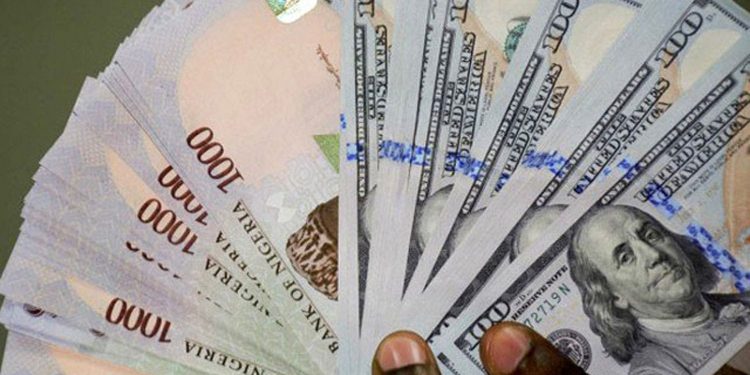Forex turnover rose sharply by 183.7%, as the Naira’s exchange rate at the NAFEX window depreciated against the dollar to close at N394.67/$1 during intra-day trading on Tuesday, December 22.
Also, the Naira remained stable against the dollar – closing at N476/$1 at the parallel market on Tuesday, December 22, 2020 – as Nigeria’s external reserves lost $437 million in 2 weeks, declining from $35.262 billion as of December 3, 2020, to $34.825 billion as of December 17, 2020.
This puts more pressure on the country’s external reserve as it impacts on CBN’s capacity to intervene in the foreign exchange market.
According to information from Abokifx – a prominent FX tracking website, at the black market where forex is traded unofficially, the Naira remained stable against the Dollar to close at N476/$1 on Tuesday – exactly the same rate that it exchanged for on Monday, December 21.
- The local currency had strengthened by about 7.8% within one week in September at the black market, as the CBN introduced some measures targeted at exporters and importers.
- This is to boost the supply of dollars in the foreign exchange market and reduce the high demand for forex by traders.
- However, the gains appear to have been completely erased with the recent crash of the exchange rate.
- The CBN has sold over $1 billion to BDCs since they resumed forex sales on Monday, September 7, 2020.
- This was expected to inject more liquidity into the retail end of the foreign exchange market and discourage hoarding and speculation.
- However, the exchange rate against the dollar has remained volatile after the initial gains made, following the CBN’s resumption of sales of dollars to the BDCs.
- Despite the CBN’s intervention, the huge demand backlog by manufacturers and foreign investors still puts pressure and creates a volatile situation in the foreign exchange market.
NAFEX
The Naira depreciated against the dollar at the Investors and Exporters (I&E) window on Tuesday, closing at N394.67/$1.
- This represents a 67 kobo drop when compared to the N394/$1 that it exchanged for on Monday, December 21.
- The opening indicative rate was N391.86 to a dollar on Tuesday. This represents a 23 kobo drop when compared to the N391.63 that was recorded on Monday.
- The N406.25 to a dollar was the highest rate during intra-day trading before, it still closed at N394.67 to a dollar. It also sold for as low as N385/$1 during intra-day trading.
- Forex turnover: Forex turnover at the Investor and Exporters (I&E) window increased by 183.7% on Tuesday, December 22, 2020.
- According to the data tracked by Nairametrics from FMDQ, forex turnover rose from $83.50 million on Monday, December 21, 2020, to $236.91 million on Tuesday, December 22, 2020.
- The CBN is still struggling to clear the backlog of foreign exchange demand, especially by foreign investors wishing to repatriate their funds.
- The sharp increase in dollar supply after the previous trading day’s drop reinforces the volatility of the foreign exchange market. The supply of dollars has been on a decline for months due to low oil prices and the absence of foreign capital inflow into the country.
- The average daily forex sale for last week was about $169.93 million, which represents a huge increase from the $34.5 million that was recorded the previous week.
- Total forex trading at the NAFEX window in the month of September was about $1.98 billion, compared to $843.97 million in August.
- The exchange rate is still being affected by low oil prices, dollar scarcity, a backlog of forex demand, and a shaky economy that has been hit by the coronavirus pandemic.
- Some members of MPC of the CBN had expressed serious concerns over the increasing demand pressure in the country’s foreign exchange market. This is an obligation of manufacturers to their foreign suppliers that continues to increase in the face of dollar shortages.







